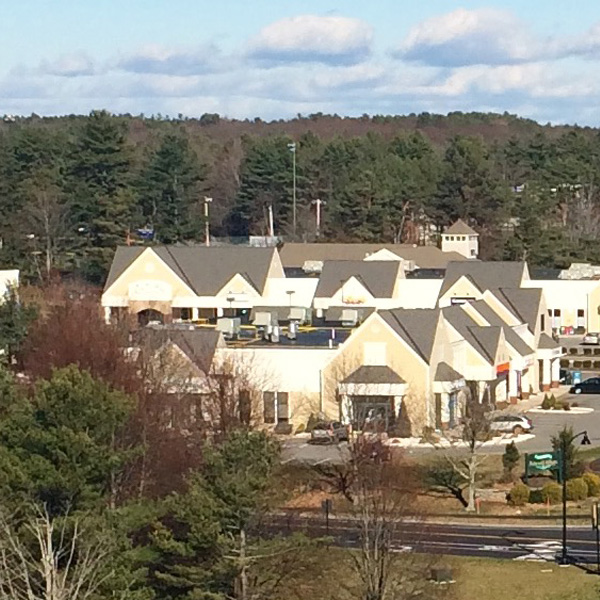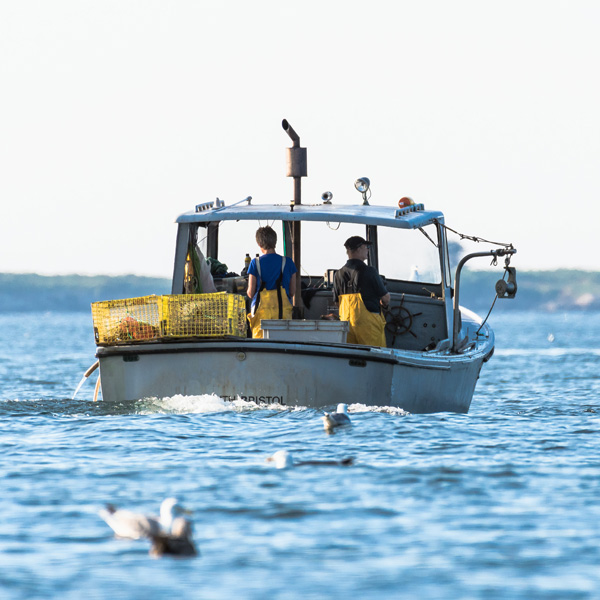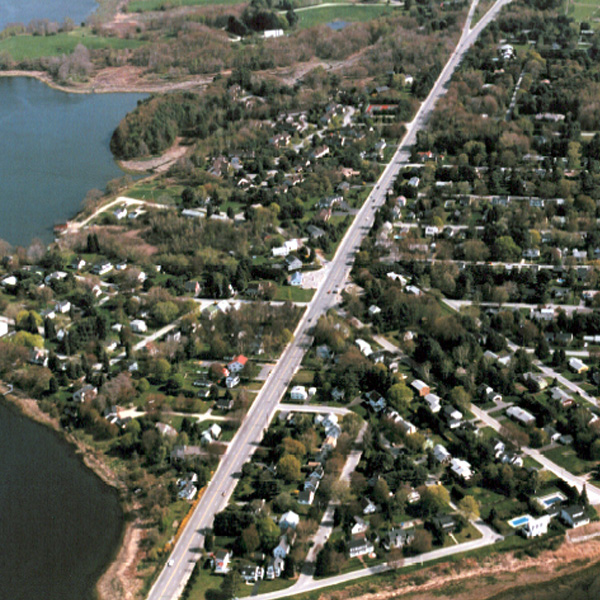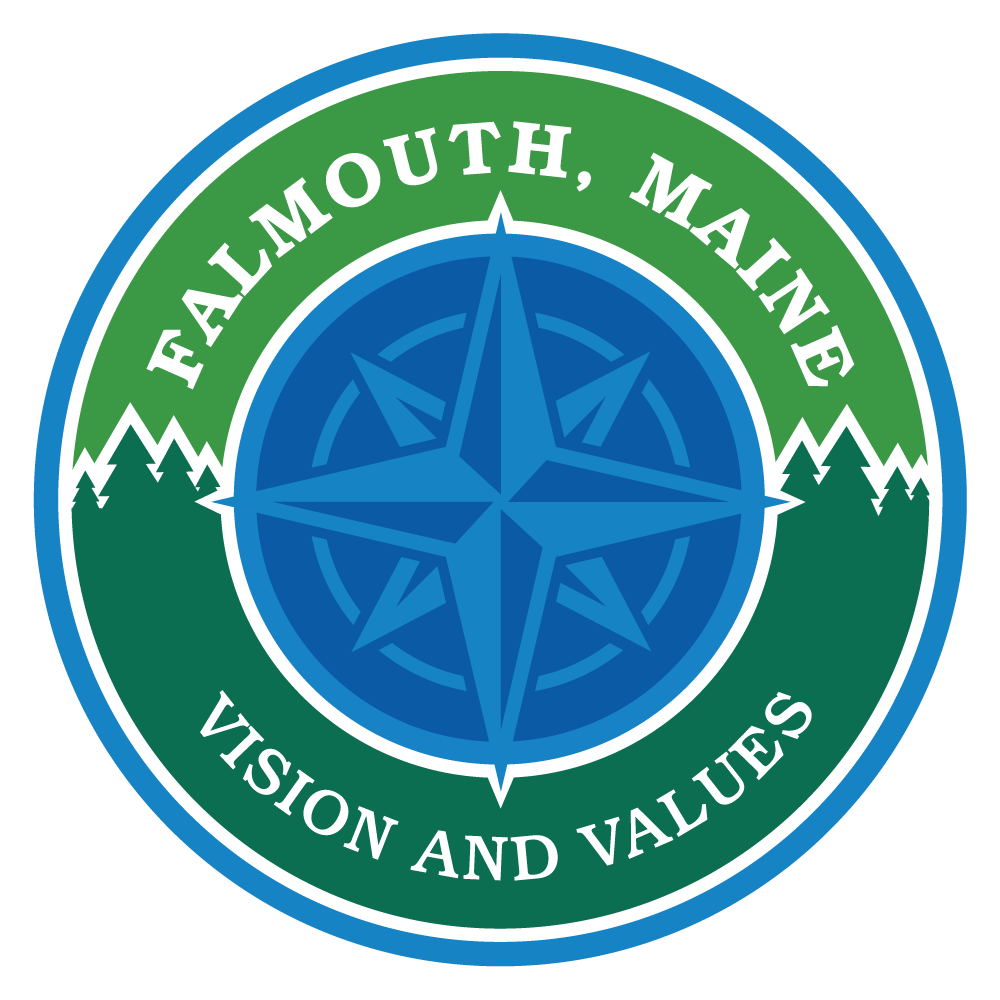


Falmouth is currently a predominantly residential community. For decades, Falmouth residents have discussed and planned for the creation of a Town Center as reflected in many planning documents governing development today. They have also expressed a desire for a cautious approach to non-residential development. Knowing that there is a wide range of views on this topic, we are keen to hear your comments about the future trajectory.
What do you think would be the ideal type and scale of non-residential development, that could create positive outcomes for the community?

For more information about the Town of Falmouth Vision and Values project, please contact:
David Beurle, CEO
Future iQ
Phone: (612) 757-9190
david@future-iq.com
26 Comments
In the early 1990s, Falmouth updated its comprehensive plan following a national and regional recession. Not surprisingly, economic development was the major topic of discussion and focus of the plan’s recommendations. Interestingly, the goals of the community were not so much geared toward increasing the tax base, creating jobs, or getting goods and services not available in Falmouth, things many economic development programs go after. The overarching goal was to improve the quality of life in the community.
That plan set in motion the master planning process of the Route 1 corridor redevelopment that revitalized the 1970s vintage shopping centers, including redevelopment of the old Kmart with the public-private partnerships that created Family Ice, the adjacent Town park, and the Walmart and cinemas. Because of the strong community support for high quality development, Falmouth was one of the first towns in Maine to adopt commercial design guidelines. At the same time, policy makers acknowledged that private development interests required flexibility on allowed uses and design requirements in order to finance the projects that made revitalization happen. The results of redevelopment were not ideal, but they were a tremendous improvement over the prior commercial strip development.
That redevelopment had a ripple effect on properties up and down the Route 1 corridor, and over a 15-year time frame, most of the corridor redeveloped following the same pattern. The same planning process ensued on Route 100 at the Turnpike Exit, and the master plan for West Falmouth Crossing produced a new commercial center for the west side of Town.
Falmouth is extremely, if not uniquely positioned to capitalize on past economic development successes if it continues to value these types of community centers and maximizes the limited space allowed for commercial development in the community. It is very important that local negative responses to individual projects not derail the continued pro-active planning for economic revitalization and cooperative engagement with commercial developers in master planning and public-private partnerships. Falmouth has much to lose as well as much to gain.
Now that we have two 4 and 5 story non-residential buildings in Falmouth, I’m guessing that we will see more of the same… perhaps some “nice” 10 story buildings?
I tried this concern in an earlier email which was rejected. Looking at the area around the Shaws shopping center as a town center, I am distressed that two four story buildings are going up so close to Route 1. Neither gives the impression of a New England town center for a town the size of Falmouth.
I tend to agree. If buildings of this size we’re intended to be mixed use (commercial and residential), I could see their benefit. But if these will be commercial only, I think the change in character (not to mention increased traffic) outweighs the benefits.
I agree with Phil Davies. Those two four story buildings dramatically change the landscape – not for the better. They are an eyesore on what was a pleasant small town shopping area. It is a real disappointment that the town would allow something like this.
Thank you to George for all of the important context and history regarding the development of Rt. 1 in Falmouth. I would also second his comment his last paragraph that Falmouth is uniquely situated to continue shaping what it wants in a town center like Rt. 1.
I’m certainly in the minority commenting here, but I actually like the two new buildings going up on Rt. 1 and I’m excited that there will be a new restaurant and many new offices upstairs. Those will support the businesses that we love that have struggled through the last 18 months. Do I have some minor complaints regarding the blandness of their design? Sure. That said, this is an argument for setting some standards for what the town wants. As George points out, Falmouth is unique in terms of our proximity to Portland and our desirability to developers. Like Freeport or Yarmouth, we could make reasonable standards that promote growth but make sure that it’s attractive. That said, I also agree with George that local negative voices cannot be given a heckler’s veto either. This is why set, agreed-upon standards would benefit everyone so that not every project is subject to the whims of the political process.
As for what I’d like to see on Rt. 1 going forward – more 2-4 story buildings with restaurants and offices that take up all of the unsightly parking spots that are almost never used. I would also love to see more bike racks and pedestrian friendly walkable development. We spent all this money widening Rt. 1 for bikes and pedestrians, but almost no businesses have bike racks for people to use. Lastly, maybe we should be open to limited studio-to-two bedroom apartments above some businesses in Rt. 1. Hiring and affordable housing for workers at businesses along Rt. 1 is a huge challenge and this could help with that while also adding more vibrancy to Rt. 1 at night.
While there are MANY improvements on Route 1, I don’t agree that it has been widened for bikes in the main business area (intersection with 88 to Bucknam Road). The shoulder through that section is quite narrow. It can be daunting for bikers given the heavy traffic and multiple intersections and curb cuts. What further changes could improve that section for bikes? For example, could bike lanes be painted to increase visibility?
First, I’d like to ask that these pages be printed with a darker font, they are very difficult to read. Yes, I can enlarge them, but then I have to move the whole page back and forth for every line.
I also dislike the large buildings going in by Shaw’s on Route 1. It’s possible that large buildings could be tucked discretely somewhere in Falmouth. But for the town to approve for them be built so close to the road that they loom over it, much closer than most of the other buildings, is quite jarring. I get it the town needs the tax money and the developer is no doubt making big bucks, but at the expense of the small town charm that was part of the plan for that area?
I would have to agree with Tom. I am in favor of building up route 1 with more of the 4 and 5 story buildings. These buildings bring more business’s, restaurants, office space to Falmouth. These two new buildings and hopefully the future buildings lessen the tax burden on the residents of Falmouth. It will make use of the open parking lots that nobody parks in. It would be nice to see Falmouth not be a ghost town after 9 pm on route 1.
If I remember correctly, building design standards set in the 90s required gabled facades and no, NO flat top roofs. Why request in put from residents when zoning board of appeals can be bamboozled into letting developers get what they want and dismiss prior planning development guidelines. Yes, these cubicle boxes are eyesores and clash terribly. Likewise, single lane traffic on Rt 1 in order to provide a sidewalk that is rarely if ever used was folly. People do not shop on foot. I would also like to see legal standards for bike lanes addressed. If a bikelane is present, it ishould be illegal to use the roadway, straddle the white line, or travel other than single file.
Further, I would like to add there is a terrible moral hazard to development requirements for controlled runoff drainage to storm drains. North Brook at Johnson road is gone. Cheney brook is all but gone. Both feeder streams to Mill Creek which is now a trickle of its prior flowage. Had the development behind Shaw’s come to pass, mill creek would have dried up. Entire ecosystems that existed up to the 80s are forever destroyed in vain.
Similar views to Tom and Brody, if we want a village center it needs to be conveniently walkable–the current sidewalks and distance between shops are not realistic for anyone to move and browse between shops. As such, Rte 1 needs density of commercial/retail/dining. The Town should encourage multi-story buildings on a walkable street area with parking hidden behind it. Think of e.g. Saratoga Springs downtown, for instance. This is easy to say and much harder to accomplish of course, but may be a third wave for Rte 1 given George’s very helpful summation of the past two phases.
The whole idea of a town center is ridiculous and the money spent on reconfiguring Rt1 has done nothing but back up traffic. Side walks are rarely used, biking is a short season in Maine and the number of road signs is mind boggling.. The classic solution looking for a problem. It’s Rt1, it will never be a “village” or “town center”. It will never be Yarmouth. We have done a good job not letting it become Scarborough. Let’s appreciate what we have and skip further “improvements”
Town centers evolve based on economic decisions by investors who could care less about what a Town wants its downtown to look like. The evolution of our economy based on technology and retailing strategies will change which stores can afford to be located in a small town. Evolving COVID strains will further change restaurant approaches. The Town’s efforts to redevelop Route 1 and Route 100 is government seeking solutions which will really be determined by an evolving economy. The Town needs a more realistic perspective.
MODERATOR COMMENT: It is great to see these conversational threads evolve.
These Discussions Boards are being moderated to match the stated guidelines: “Comments made via this portal are public. We expect conversations to follow the rules of polite discourse. Messages containing inappropriate content or language will be removed at the discretion of Future iQ”. To date, we have had to exclude a number of comments that are critical about people or groups, or are obviously off-purpose (unrelated political commentary; for example). PLEASE remember, these are open community conversations, to which a wide range of people are contributing – including school students. These Discussion Boards are an opportunity for thoughtful, polite and convivial community discussion focused on exploring specific important issues. Please consider ‘tone and content’ before submitting, as we will draw a clear line – and exclude – inappropriate messages. Thank you.
A town center doesn’t make sense in this town as it is widespread and has West Falmouth, Center Falmouth and Rt 88 corridor, and “the Flats” clearly established. Residents who live where they do in Falmouth appreciate this differentiation and each has its unique benefits. In this age of electronic communication there is little need to have a physical center where all town resources can be accessed online. Falmouth is significantly larger in population and square miles than other towns with a “center”.
I feel that there is ample opportunity to accommodate small business along our Rt 1 corridor and West Falmouth Crossing. This is where the major roads provide access and optimal for commuters and public transportation. I also feel that this is where the town should explore building apartments for lower cost housing opportunities. From prior surveys, there has always been support for keeping Falmouth character “New England small town” that embraced local business. Regarding the 4-story box structures on Rt 1: “Why did the town allow this to happen? Did the community have any input prior to these structures being approved for construction? ” These were comments/questions I received and would ask the same.
First, thank you for making this forum available. I tend to agree with many of the comments, including L. Lengyel and J. Solley & B. Rodden. The 2 new structures along Rte. 1 are a terrible eye sore against the backdrop of the rest of the area. If such structures are to be approved, can they not be build further back, away from the road, behind current store fronts or in more outlying areas? Falmouth is so small, this would not render them “inconvenient”. I also question the wisdom of building more office space, given the pandemic’s ongoing impact of emptying out of work/office spaces. Many offices will not reopen, their employees permanently working from home. Please do not allow any further large structures along Rte. 1, they are hardly a “needed improvement”.
I wish more people knew about actions that were taken eight years ago to set the stage for creating a main street and town center along Route 1 — a vision that planning experts deemed an excellent example of how to convert an aging commercial strip into a vibrant multi-use corridor of the future. Voters approved a referendum moving power lines underground and creating bike lanes , sidewalks and lines of trees and attractive lamp posts. And after literally years of input from the public, the Town Council approved ordinances that prevent future big box stores and, over time, will create a modern village where residents can live, work and shop without needing a car. It’s disappointing that the new owner of the Shopping Center chose to build two tall office buildings first, but a new upscale restaurant in one of them will be a great addition. I wish residents had told the Planning Board that the architecture conflicted with neighboring buildings but nobody did — until it was too late. I think the ordinance can be improved by requiring master plans for major redevelopment so changes aren’t made piecemeal, but change is not necessarily bad just because it’s change.
Has anyone considered a rotary, a round-about type option for the complicated intersection area that is on Rt one right before Maine Audubon’s entrance and the entrance near the PCC (Portland Country Club)?
The town should rename Route 1 to Main Street.
More non-residential development will add to the tax base, where additional housing will increase taxes as the school budget is our largest expenditure. Certainly non-residential development should be grouped along Routes 1 and 100/West Crossing. To avoid sprawl, adding height seems inevitable and I hope we can do it gracefully. I understand the Vision of a town center, but don’t think it is a realistic goal.
Falmouth’s geography and Maine’s climate preclude the town’s longstanding attempts to create a village center and encourage biking. Better to embrace what we have and gently shape development (agreeing here that parking lots are not best-placed out front), knowing that short trips to shop, work, and join community activities will be by car.
Thank you for participating in last night’s focus group. Really appreciated exchanging ideas on this important topic!
Thank you for this forum. First I would like to agree with Bonnie Rodden that the changes in our Rt 1 corridor made over the past decade is a profound improvement and I commend the efforts of all responsible for this change. The esthetics of this corridor dramatically improved and yet I understand the comments regarding the two four story buildings under construction. My first reaction to them was negative as well yet I believe with time I will come to appreciate the new construction. My concern and hope is the owners of the Falmouth shopping center create an esthetic and cohesive plan for the space between the “book end” four story buildings as well as incorporating the existing plaza into the overall design. Creating green space around these buildings and varying the heights of any additional structures along with adequate space between them would go a long way to continue to esthetic improvements of this Rt 1 corridor.
I would also like to comment on what seems to me to be a continuous desire for a main street in Falmouth. While Rt 1 does fit the a concept of a commercial main street, I agree with several posts that mention the lack of pedestrian traffic on this street which often characterizes an imagined Main St. The question remains as to what defines a Main St. I believe we have a very attractive commercial thoroughfare with Rt 1 but we lack the smaller pedestrian Main street many residents desire such as that found in Yarmouth. Think how exciting it would be for Falmouth to have not only an attractive commercial Main st( Rt 1) but also a quaint pedestrian friendly Main Street filled with small shops, small apartment buildings, library, community center, ball fields and senior center. This Main street already exists , in theory, and better yet it connects two important roads in Falmouth. Lunt Road and Depot Road together link Falmouth Rd and Rt 88. All of the above mentioned amenities exist on this envisioned Main Street (Lunt and Depot). Falmouth lost, what I believe was, a huge opportunity to purchase the Lunt and Plummer-Motz schools a dozen years ago. the Town Hall could have moved to the Plummer building and the then crumbling library could have moved to Lunt School. The community programs in the Motz building. The green space between those two former schools could have been a public garden with play ground and a coffee shop. Of course that was then and I commend the owner of Ocean view for stepping up to the plate and converting those spaces into apartments and office space.
Nevertheless, I still believe Falmouth has the opportunity to create a Main Street by consolidating Lunt and Depot roads. Of course this would perhaps require changes in zoning to allow small business , restaurants and small apartments. The town could create a safe pedestrian and bike centered street. This way a small Main St (Lunt/Depot Rds) could be linked to a commercial Main Street(Rt 1) and Falmouth’s dream of a true Main Street could be realized no matter how one defines a Main St.
Having said this, I realize the enormous impact this would have on the current residents on Lunt and Depot Rds. Perhaps this might be desirable to those residents due to living closer to small shops and restaurants. Or this might be viewed as the last thing these residents would want. So I would love to hear what current residents think of this idea. However, I believe Falmouth has an opportunity to actually accomplish something it has seemingly always wanted.
I have profited by reading the many thoughtful comments on this topic. I side with those who would prefer not to have more “eyesore” buildings like the two new ones on Rte. 1. If we are to have more multi-story buildings, more attention must be paid to visual appeal.
I recently read the comments by my fellow Falmouthians concerning town centers. I am delighted to see people engaged and I am impressed with the many great ideas especially the ideas about taking more control so we don’t have more large boxy multistory buildings right up next to the sidewalk. I would not want a closed in canyon-like effect. Larger buildings could be placed further back behind more attractive usage.
I have lived, worked, and now retired here for over 30 years and have seen the Rt 1 corridor evolve from a huge car lot to what I would already call a Town Center (minus the white church steeples). It’s not perfect but I love it’s combination of open spaces, walk and bike ability, retail, recreation, and even some living areas. Our town leaders did a great job burying the wires and improving Rte 1. I drove back and forth through this area every day I worked for about 25 years and there is almost no errand I couldn’t complete on my way to or from work in this ’15-minute town center’. I still enjoy coming in and grabbing a cup of coffee and doing my errands or going to the open market.
However the day I drove by and saw the sidewalk skyscraper, my heart sank and I still have that sinking feeling when I drive through. You can imagine how I felt when some time later I saw a second one being built! The planning office told me that we had a height limit of either 4 or 5 stories. I guess we missed that. Then I read the on line comments and found one that seemed to envision another Congress St. for Falmouth. If one desires that then the Portland canyons a few minutes away should satisfy that desire. Unless we change the height limit we can expect more of the same.
Further more, the anchor in one of these buildings is supposedly chase Manhattan Bank. Now we already have 9 banks in 7 tenths of a mile. We need another bank like a whole in the head, especially a national bank, which group generally does not contribute to local needs like Norway, Gorham, and Bath banks for example.
I noticed that less than half of the local population were interested in retail and business hubs so I’m not sure that densely packed businesses such as in tall buildings should be a goal. Though I get the feeling that those of us who are not pro high rise are referred to as “negative responses to individual projects”, or “derailers”, and in another comment – “heckler’s veto”(ers). I agree with Rita Z’s statement above.
I agree that Falmouth should “retain local and small-scale feel”. Why not – if one wants city then it’s just the next town over.
Land is expensive and dreaming that a utopia can exist independent of financial reality is a vision that will never be realized. Tall buildings allow for cheaper rents for tenants. Whether homeowners like it or not, the “Town Center” will evolve based on economic reality. The Town needs to be open to all proposals that will improve the resources and services available to homeowners.
Indeed, market forces have an undeniable and major influence on town development. But I don’t believe that the town is subject to evolution by market forces alone; if it is then why do we try to have a town center plan at all? For instance I think it was the town the set height limits to downtown buildings. If we had set heights at 2 or 3 stories, or required taller buildings to be recessed more in the background would that have crushed our future potential?